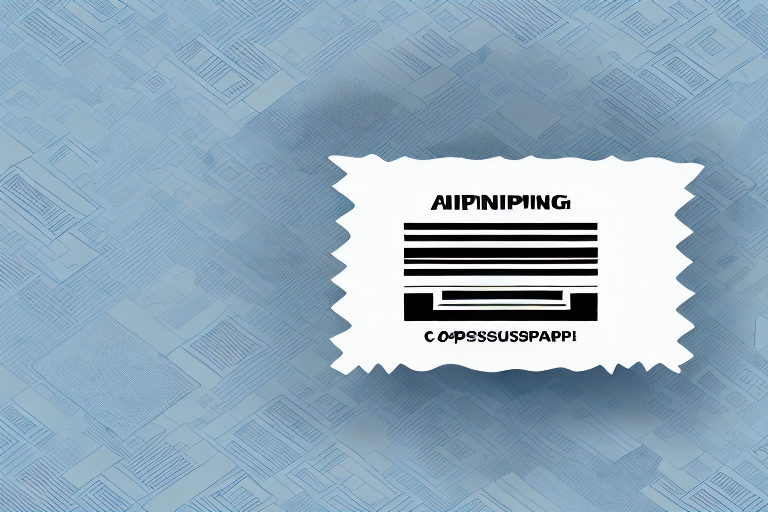Introduction to Proof of Shipping Documents
Shipping products to customers is a crucial aspect of any business that deals with physical goods. A proof of shipping document serves as a record verifying that goods were shipped and received by the customer. This article explores the importance of proof of shipping documents, the legal requirements for creating them, and the various types available. Additionally, we provide a step-by-step guide to creating effective proof of shipping documents, best practices, common mistakes to avoid, customization tips, and strategies for using technology to streamline the process. We also cover tips for maintaining accurate records and handling disputes with customers using evidence from your proof of shipping documents.
Importance of Proof of Shipping Documents
A proof of shipping document is vital for several reasons:
- Clarity and Accountability: Ensures that both the buyer and seller are aligned regarding the specifics of the shipment, including items, quantities, and product codes.
- Dispute Resolution: Serves as evidence that goods have been shipped and received, protecting both parties in case of disputes.
- Record-Keeping: Acts as a valuable tool for tracking shipping history and inventory levels.
Moreover, maintaining detailed shipping records helps businesses identify and rectify potential issues in their shipping processes, leading to increased customer satisfaction and cost savings.
Enhancing Shipping Processes
By tracking shipping dates, delivery times, and any damages or losses during transit, businesses can identify patterns and make necessary improvements to their shipping procedures. According to a Supply Chain Digital report, companies that optimize their shipping processes can reduce costs by up to 15% annually.
Legal Requirements for Proof of Shipping Documents
Creating a proof of shipping document involves adhering to several legal requirements to ensure its validity:
- Identification: Clearly state the names of the shipper and receiver.
- Shipment Details: Include the shipping date, type of goods, quantity, and any applicable product codes.
- Special Requirements: Outline any special conditions, such as temperature controls or the handling of hazardous materials.
- Transportation Mode: Specify the mode of transportation (air, sea, land) and the name of the carrier or shipping company.
- Signatures: Ensure the document is signed and dated by both the shipper and receiver.
Failure to provide accurate information can lead to legal complications, including refused shipments or withheld payments. It’s essential to stay updated with regulations from authoritative sources such as the Federal Motor Carrier Safety Administration (FMCSA) for land shipments or the International Air Transport Association (IATA) for air shipments.
Types of Proof of Shipping Documents
There are several types of proof of shipping documents, each serving different business needs:
- Bill of Lading: Typically used for larger shipments, providing detailed information about the shipment, including weight and dimensions.
- Delivery Note: Useful for smaller packages, containing basic information such as the recipient's name and address.
- Packing Slip: Lists the contents of the package, aiding in inventory management and verification upon delivery.
Choosing the right type depends on your business and customer requirements. Consult with your shipping provider to determine the most suitable option.
Compliance with Regulations
Different industries and countries may have specific regulations regarding shipping documents. For example, international shipments may require customs declarations and compliance with World Trade Organization (WTO) standards. Always research and comply with relevant regulations to avoid legal issues.
Step-by-Step Guide to Creating a Proof of Shipping Document
- Gather Necessary Information: Collect details such as the buyer's name and address, invoice number, product descriptions, and quantities.
- Select a Template: Choose a document template that suits your business needs and customize it with the gathered information.
- Customize the Document: Include additional fields if necessary, such as tracking numbers or special instructions.
- Review for Accuracy: Double-check all information to prevent errors that could lead to shipment delays or disputes.
- Print and Attach: Print the completed document and attach it securely to the package.
- Maintain Records: Keep a copy of the document for your records, either digitally or physically.
Using this structured approach ensures that your proof of shipping documents are comprehensive and reliable.
International Shipping Considerations
For international shipments, additional documentation such as customs declarations may be required. Refer to sources like the U.S. Customs and Border Protection (CBP) for guidelines on international shipping documentation.
Best Practices for Effective Proof of Shipping Documents
- Ensure Accuracy: Verify all information to avoid errors that could lead to shipment delays or disputes.
- Use Clear Language: Make the document easy to read and understand.
- Secure Documentation: Utilize tamper-proof methods to prevent fraudulent activities.
- Include Essential Information: Recipient and sender details, shipment date, tracking number, and package description are crucial.
- Organize Records: Implement a consistent naming convention and centralized storage for easy access.
Implementing these best practices enhances the reliability and effectiveness of your shipping documentation.
Leveraging Digital Tools
Adopting digital solutions can improve the accuracy and accessibility of your proof of shipping documents. Tools like Microsoft Excel or Salesforce can help in maintaining organized records and tracking shipments efficiently.
Common Mistakes to Avoid
- Incorrect Labeling: Mislabeling packages or omitting essential information can cause confusion and delays.
- Poor Record-Keeping: Not maintaining accurate records can lead to lost packages and dissatisfied customers.
- Inconsistent Documentation: Failing to use a consistent format makes it difficult to track and manage shipments.
- Lack of Accessibility: Not keeping documents easily accessible can hinder dispute resolution and record retrieval.
Avoiding these common mistakes ensures smoother shipping operations and better customer relations.
Maintaining Organization
Use centralized storage solutions and consistent naming conventions to keep your proof of shipping documents organized and easily retrievable.
Customizing Your Proof of Shipping Documents
Tailoring your proof of shipping documents to fit your business needs can enhance professionalism and efficiency:
- Add Branding: Include your company logo and branding elements to reinforce brand identity.
- Include Additional Fields: Customize fields to capture unique data points relevant to your business operations.
- Integrate Technology: Utilize barcode scanning or QR codes for easier tracking and verification.
Customization ensures that the documents align with your business processes and customer expectations.
Enhancing Customer Experience
Personalizing proof of shipping documents with branding and relevant information can improve the customer experience and build trust.
Maintaining Accurate Records
Accurate record-keeping is essential for tracking shipping history and managing inventory effectively:
- Implement a Filing System: Use digital or physical filing systems to organize your documents systematically.
- Utilize Databases: Record key shipment details such as destination, delivery dates, and special instructions in a spreadsheet or database.
- Regular Audits: Periodically review your records to ensure accuracy and completeness.
Effective record maintenance supports operational efficiency and helps in resolving any future disputes.
Digital Record-Keeping Solutions
Adopting digital record-keeping solutions like Google Sheets or Airtable can facilitate easier data management and retrieval.
Using Technology to Streamline Proof of Shipping Document Creation
Leveraging technology can significantly enhance the efficiency of creating and managing proof of shipping documents:
- Automated Software: Utilize shipping software that automates the creation of shipping labels and documents.
- Integration with Business Tools: Integrate shipping systems with your eCommerce platforms or inventory management systems for seamless operations.
- Cloud Storage: Store documents in the cloud for easy access and collaboration.
Implementing these technological solutions reduces the risk of errors and speeds up the shipping process.
Popular Shipping Software Solutions
Consider using tools like ShipStation or FedEx Shipping Tools to automate and streamline your shipping documentation process.
Handling Disputes with Customers Using Proof of Shipping Documents
In the event of disputes regarding shipments, proof of shipping documents are invaluable:
- Provide Clear Evidence: Use the documents to present a clear timeline and details of the shipment.
- Maintain Copies: Keep multiple copies of all shipping documents to provide necessary evidence when needed.
- Consult Legal Teams: In complex disputes, seek advice from legal professionals to resolve issues effectively.
Having well-maintained proof of shipping documents can prevent escalation and facilitate swift resolution of disputes.
Effective Communication
Communicate transparently with customers, providing them with tracking information and updates to minimize misunderstandings and disputes.
Advanced Strategies for Improving Proof of Shipping Documents
Beyond the basics, several advanced strategies can enhance your proof of shipping documents:
- Incorporate Tracking Information: Allow customers to track their packages in real-time by including tracking numbers and links.
- Use Barcode Technology: Implement barcode scanning for efficient tracking and verification processes.
- Automate Document Creation: Use automation tools to reduce manual input and increase accuracy.
These strategies not only improve efficiency but also enhance the reliability and professionalism of your shipping operations.
Implementing Barcode Scanning
Integrating barcode scanning technology can streamline inventory management and reduce errors in shipping documents.
Case Studies: Effective Proof of Shipping Documents in Action
Examining real-world examples can provide valuable insights into creating effective proof of shipping documents:
- Company A: Implemented automated shipping software, resulting in a 20% reduction in shipping errors and a 15% increase in customer satisfaction.
- Company B: Customized their shipping documents with branding and additional data fields, leading to improved brand recognition and streamlined operations.
- Company C: Adopted barcode scanning technology, enhancing their inventory management and reducing order processing time by 25%.
These case studies highlight the benefits of optimizing your proof of shipping documents through technology and best practices.
Conclusion
Creating a proof of shipping document is a critical aspect of any business that ships physical goods. By adhering to best practices and avoiding common mistakes, you can develop effective and accurate documents that protect your business and satisfy your customers. Utilize the tips and strategies outlined in this article to streamline your shipping process, maintain accurate records, and ensure that your proof of shipping documents serve as reliable evidence in the event of disputes.




















